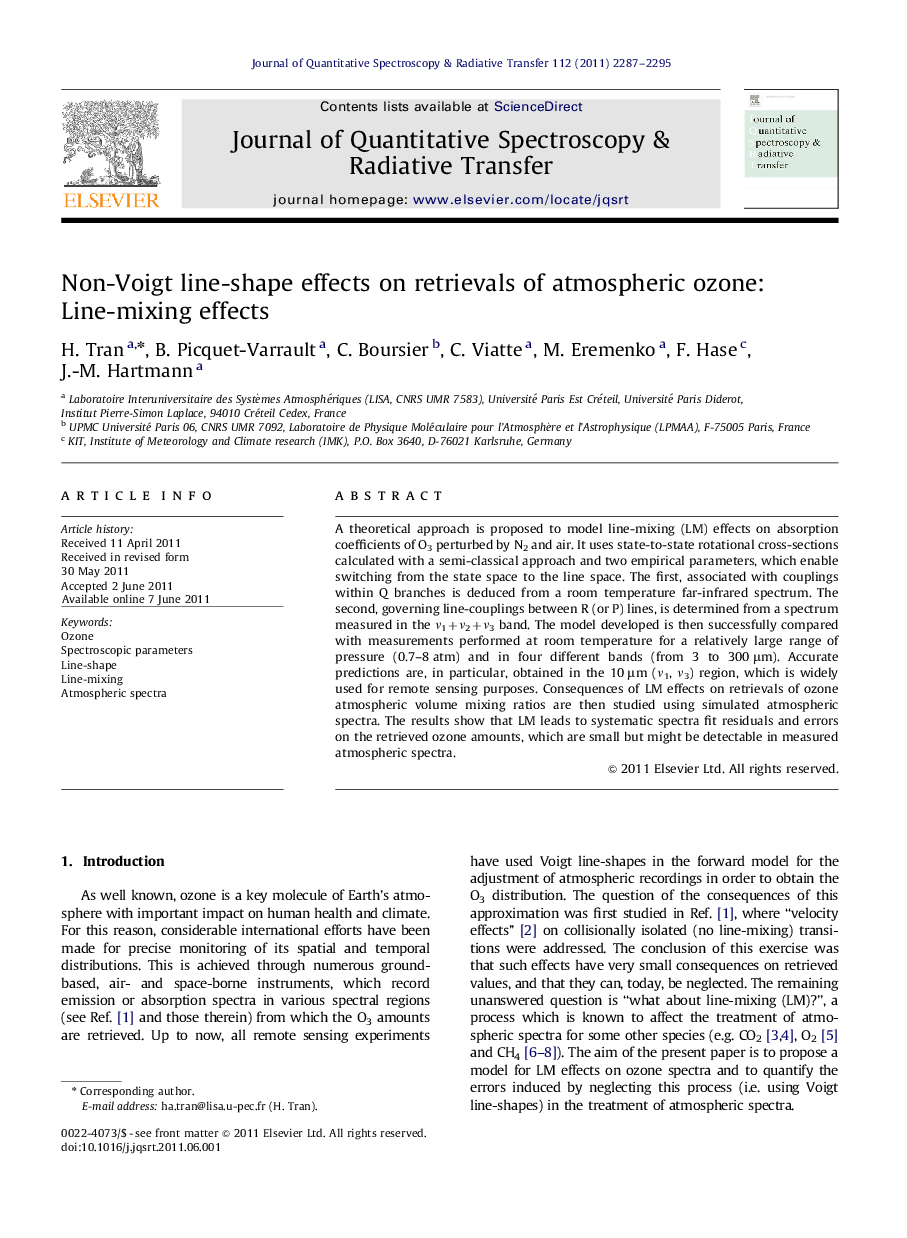| Article ID | Journal | Published Year | Pages | File Type |
|---|---|---|---|---|
| 5429322 | Journal of Quantitative Spectroscopy and Radiative Transfer | 2011 | 9 Pages |
A theoretical approach is proposed to model line-mixing (LM) effects on absorption coefficients of O3 perturbed by N2 and air. It uses state-to-state rotational cross-sections calculated with a semi-classical approach and two empirical parameters, which enable switching from the state space to the line space. The first, associated with couplings within Q branches is deduced from a room temperature far-infrared spectrum. The second, governing line-couplings between R (or P) lines, is determined from a spectrum measured in the ν1+ν2+ν3 band. The model developed is then successfully compared with measurements performed at room temperature for a relatively large range of pressure (0.7-8 atm) and in four different bands (from 3 to 300 μm). Accurate predictions are, in particular, obtained in the 10 μm (ν1, ν3) region, which is widely used for remote sensing purposes. Consequences of LM effects on retrievals of ozone atmospheric volume mixing ratios are then studied using simulated atmospheric spectra. The results show that LM leads to systematic spectra fit residuals and errors on the retrieved ozone amounts, which are small but might be detectable in measured atmospheric spectra.
⺠A line-mixing model has been developed for air-broadened ozone. ⺠Spectra of O3 in air have been measured simultaneously in the 10 and 5 μm regions. ⺠The line-mixing model leads to good agreement with measured spectra. ⺠Influence of line-mixing effects on atmospheric spectra has been studied.
